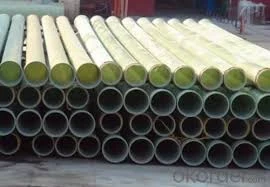
-
 Afrikaans
Afrikaans -
 Albanian
Albanian -
 Amharic
Amharic -
 Arabic
Arabic -
 Armenian
Armenian -
 Azerbaijani
Azerbaijani -
 Basque
Basque -
 Belarusian
Belarusian -
 Bengali
Bengali -
 Bosnian
Bosnian -
 Bulgarian
Bulgarian -
 Catalan
Catalan -
 Cebuano
Cebuano -
 China
China -
 China (Taiwan)
China (Taiwan) -
 Corsican
Corsican -
 Croatian
Croatian -
 Czech
Czech -
 Danish
Danish -
 Dutch
Dutch -
 English
English -
 Esperanto
Esperanto -
 Estonian
Estonian -
 Finnish
Finnish -
 French
French -
 Frisian
Frisian -
 Galician
Galician -
 Georgian
Georgian -
 German
German -
 Greek
Greek -
 Gujarati
Gujarati -
 Haitian Creole
Haitian Creole -
 hausa
hausa -
 hawaiian
hawaiian -
 Hebrew
Hebrew -
 Hindi
Hindi -
 Miao
Miao -
 Hungarian
Hungarian -
 Icelandic
Icelandic -
 igbo
igbo -
 Indonesian
Indonesian -
 irish
irish -
 Italian
Italian -
 Japanese
Japanese -
 Javanese
Javanese -
 Kannada
Kannada -
 kazakh
kazakh -
 Khmer
Khmer -
 Rwandese
Rwandese -
 Korean
Korean -
 Kurdish
Kurdish -
 Kyrgyz
Kyrgyz -
 Lao
Lao -
 Latin
Latin -
 Latvian
Latvian -
 Lithuanian
Lithuanian -
 Luxembourgish
Luxembourgish -
 Macedonian
Macedonian -
 Malgashi
Malgashi -
 Malay
Malay -
 Malayalam
Malayalam -
 Maltese
Maltese -
 Maori
Maori -
 Marathi
Marathi -
 Mongolian
Mongolian -
 Myanmar
Myanmar -
 Nepali
Nepali -
 Norwegian
Norwegian -
 Norwegian
Norwegian -
 Occitan
Occitan -
 Pashto
Pashto -
 Persian
Persian -
 Polish
Polish -
 Portuguese
Portuguese -
 Punjabi
Punjabi -
 Romanian
Romanian -
 Russian
Russian -
 Samoan
Samoan -
 Scottish Gaelic
Scottish Gaelic -
 Serbian
Serbian -
 Sesotho
Sesotho -
 Shona
Shona -
 Sindhi
Sindhi -
 Sinhala
Sinhala -
 Slovak
Slovak -
 Slovenian
Slovenian -
 Somali
Somali -
 Spanish
Spanish -
 Sundanese
Sundanese -
 Swahili
Swahili -
 Swedish
Swedish -
 Tagalog
Tagalog -
 Tajik
Tajik -
 Tamil
Tamil -
 Tatar
Tatar -
 Telugu
Telugu -
 Thai
Thai -
 Turkish
Turkish -
 Turkmen
Turkmen -
 Ukrainian
Ukrainian -
 Urdu
Urdu -
 Uighur
Uighur -
 Uzbek
Uzbek -
 Vietnamese
Vietnamese -
 Welsh
Welsh -
 Bantu
Bantu -
 Yiddish
Yiddish -
 Yoruba
Yoruba -
 Zulu
Zulu
frp walkway
Exploring the Benefits of FRP Walkways
In recent years, the construction industry has seen a significant shift towards the utilization of advanced materials that offer improved performance and durability. Among these materials, Fiber Reinforced Polymer (FRP) has gained considerable attention, especially in the design and implementation of walkways. FRP walkways are not only structural innovations but also solutions to various environmental and safety concerns in both industrial and commercial settings.
FRP is a composite material made by combining plastic with reinforcing fibers, which can include glass, carbon, or aramid. The unique characteristics of FRP make it ideal for walkway construction. One of the primary advantages of FRP walkways is their exceptional strength-to-weight ratio. This allows for the design of lightweight walkways that can bear significant loads without the risks associated with heavier materials. This feature is particularly beneficial in industries where heavy machinery or equipment may traverse designated pathways.
Exploring the Benefits of FRP Walkways
Moreover, safety is a paramount concern in industrial environments, and FRP walkways address this issue effectively. The non-slip surface of FRP materials can provide excellent traction, reducing the risk of slips and falls, which is crucial in settings where water, oils, or other hazardous substances may be present. Additionally, the materials can be designed with various colors and textures, enhancing visibility and guiding pedestrian traffic safely.
frp walkway

Environmental considerations are increasingly important in today’s construction practices, and FRP walkways can be manufactured using sustainable processes. Many FRP products are made from recycled materials or designed for recyclability at the end of their life cycle, contributing to a reduced carbon footprint. This aligns with a growing trend toward sustainable building materials and practices.
Installation of FRP walkways is another area where this material excels. They can be prefabricated off-site and then easily assembled on location, which reduces installation time and labor costs. The lightweight nature of FRP means that heavy lifting equipment is often unnecessary, further easing the installation process.
Incorporating FRP walkways into new or existing structures can significantly enhance their functionality and safety. Businesses in sectors such as manufacturing, warehousing, chemical processing, and even recreational facilities can benefit from the advantages outlined. Whether it’s providing safe access to elevated areas, creating maintenance pathways, or ensuring pedestrian safety in high-traffic zones, FRP walkways present a versatile solution.
Overall, the shift towards FRP walkways reflects a growing recognition of the benefits offered by modern materials in construction. With their combination of strength, durability, low maintenance, safety features, and environmental friendliness, it is no surprise that FRP walkways are becoming a preferred choice across various industries. As technology advances and sustainability becomes a driving force in building practices, the future of FRP in walkway applications looks exceptionally promising.
Latest news
-
Exploring the Benefits of Top Hammer Drifter Rods for Enhanced Drilling PerformanceNewsJun.10,2025
-
High-Precision Fiberglass Winding Machine for GRP/FRP Pipe Production – Reliable & Efficient SolutionsNewsJun.10,2025
-
FRP Pipes & Fittings for Shipbuilding - Corrosion-Resistant & LightweightNewsJun.09,2025
-
Premium FRP Flooring Solutions Durable & Slip-ResistantNewsJun.09,2025
-
Premium Fiberglass Rectangular Tanks Durable & Lightweight SolutionNewsJun.09,2025
-
Tapered Drill String Design Guide Durable Performance & UsesNewsJun.09,2025









